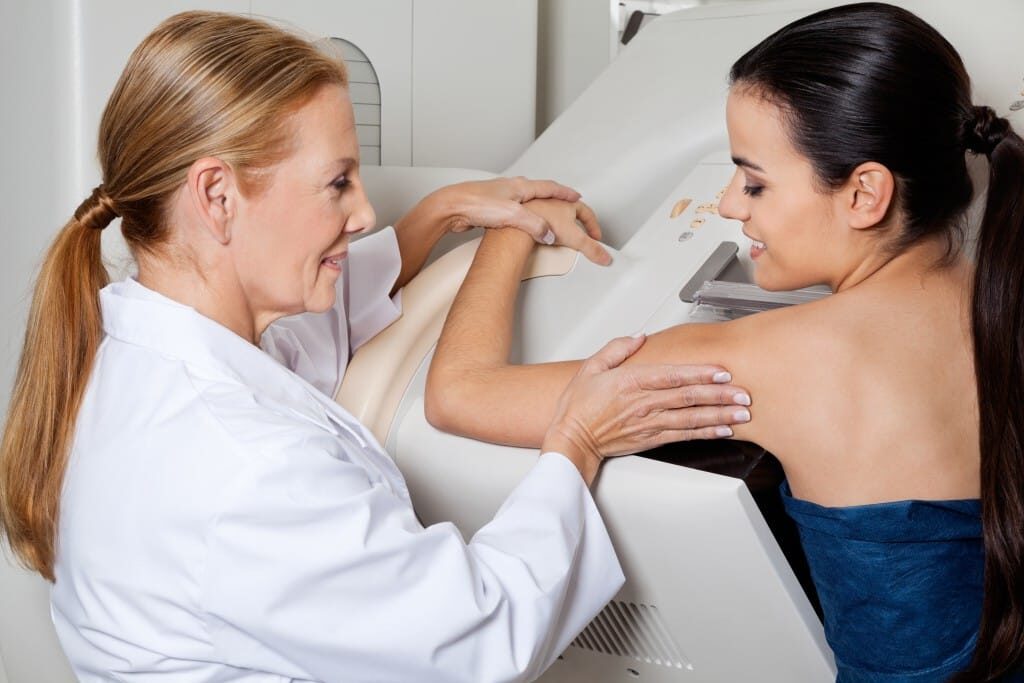
Health is something very important in the life of every human being and that is why it is recommended to carry out regular check-ups in order to detect any possible inconvenience in time. This happens in all cases, but especially with women who usually have medical check-ups in their lives related to gynecological issues. Beyond reproductive health and regular blood tests, it is also recommended to perform pap smears and mammograms from the age of thirty, as it allows different conditions to be detected in their early stages.
However, there are some issues to take into account in relation to mammograms and pregnancy because due to the characteristics of this study, it is necessary to know the step by step in order to take certain precautions. Above all, if you are not taking care of yourself when having sex. As with x-rays, it is advisable to carry out these studies when you are sure that you are not pregnant. But if you want to take care of your health and carry out the corresponding studies, continue reading below to obtain the most complete information in relation to mammography and pregnancy.
What is it for
The importance of performing mammograms from that age is because thanks to this test breast cancer is detected in its early stages, sometimes it can even be detected three years before it can be felt with palpation. Thanks to the evolution of preventive medicine and technology, today there is a range of non-invasive studies that allow certain conditions to be detected in time to carry out treatment.
In the case of mammograms, it is an X-ray study of the breast that looks for possible early signs of breast cancer. There are two types of mammograms, screening and diagnostic. The first is recommended to be done once a year from the age of 30. This is a study that is carried out on women who do not present signs or symptoms of breast cancer and that allows regular monitoring and detects any possible problem in time so that treatment can begin as soon as possible.
Although it is a non-invasive study, screening mammograms carry certain risks due to the anxiety they can cause. The images may reveal some abnormal signs that are not necessarily linked to cancer. In these cases, various complementary studies are carried out to find the diagnosis, which leads to many cases in which women worry only to later discover that everything was fine. On the other hand, it is a study in which the woman is exposed to X-rays. For this reason, it is important to know and make the pertinent consultation with the specialist to then decide when and how often they will be carried out.
diagnostic mammography
In addition to screening mammography, that is, the routine study once a year, there are also diagnostic mammograms, which are the studies recommended when a woman detects a lump or other signs or symptoms associated with breast cancer. Signs may include breast pain, thickening of the breast skin, discharge from the nipple, or a change in the size or shape of the breasts. However, having any of these symptoms does not mean suffering from the disease since there are various causes that can affect the breasts.
In these cases, mammography is performed and is accompanied by other types of tests and studies in order to reach an accurate diagnosis. It is also possible that the person will be referred to a breast specialist or a surgeon since they are specialists in this type of diagnosis.
How it is performed
The preparation for the mammography is very simple, it is not necessary to take any prior medication and it is not necessary to fast as in the blood tests. The used clothing is better if it is comfortable and easy to remove since it will be necessary to leave a bare chest and the documents that must be carried are the previous reports if they are available.
Although mammography is not invasive, it can cause some discomfort. At the time of doing it, the woman must stand in front of the X-ray machine. The person taking the X-rays will give instructions and position the person to be able to take the images. She will place your breasts between two plastic plates and press on them to flatten them for clear images. It is an annoying process but not very painful. The expert will give instructions and suggest staying quiet and without breathing so that the images are of quality. She will move the person in various positions until she makes a series of captures.
Once the process is finished, you will have to get dressed again and wait for the results, which will arrive in a few days or weeks. The mammogram is made up of an x-ray of both breasts from the front and from the side. Once done, the radiologist together with a specialist doctor will analyze the images to detect early signs of breast cancer or other problems.
Mammography and pregnancy
Although these studies are routine and are part of the prevention plan of every gynecologist, when a woman is pregnant or if she is not taking care of herself, it is recommended not to perform x-rays. Unless it is strictly necessary, it is not suggested to undergo X-ray exposure during pregnancy. In the case of pregnant women, the reason why they should be avoided is clear. But it is also suggested to stop mammograms when looking for a baby since it is not known for sure if the woman is pregnant. In these cases, it will be advisable to carry out the study after taking a home pregnancy test if there is a missed period.
When a woman is pregnant, mammograms are not recommended during the first trimester of pregnancy. In the event that it is necessary to perform it, it is important to use a lead apron to avoid exposing the embryo to X-rays. In general, doctors recommend postponing mammograms until after giving birth or at least waiting until the third pregnancy trimester. After giving birth, it is possible to have a mammogram without problem, even if you are breastfeeding.
It is important to inform the doctor before a possible pregnancy or if it is suspected that you could be pregnant. Also in the case of practicing breastfeeding. According to the information obtained, the specialist will evaluate the case in order to determine the best time to perform the mammography, avoiding the risks involved in it.
X-rays and pregnancy
Beyond the care mentioned above, it is also important to know that in mammograms the radiographic technique is low energy and the volume to be irradiated is small. This means that the scattered radiation that reaches the fetus is not significant, which is undoubtedly good news. This does not imply that it is better to avoid any type of exposure in the case of having the information that you are pregnant. But it is also important to know the details so that if you are pregnant and have been exposed to this type of study, you can carry out the pertinent consultation without being trapped by anxiety. Although it is advisable not to perform a mammogram in a pregnancy, the exposure to rays involved in it.
This differs from other types of studies or examinations that, unlike this one, require direct exposure of the fetus to the radiation beam. This is the case of examinations of the lower abdomen. In these cases, the exposure is direct, while in mammography, the exposure to the rays is carried out in areas far from the fetal area. This means that the fetus would not be exposed to the direct beam of radiation and will receive very low scattered radiation doses.
Types of studies
It is important to provide as much information as possible to the doctor so that he can evaluate each case and take the appropriate precautions. Any X-ray study involves some risk and that is why it is important to perform them only if strictly necessary. If possible, the doctor will evaluate the possibility of postponing the examination, using an alternative study, such as ultrasound or ultrasound, in order to obtain the result without the need for exposure to rays. And in the event that it is not possible to postpone the study, it will be necessary to take special measures to keep the dose of the fetus as low as possible.
However, if it is necessary to reach a diagnosis, you can opt for other alternatives such as breast ultrasound, magnetic resonance imaging and biopsies. All three are safe during pregnancy as long as contrast is not performed, as it can cross the placenta. In the event that the results are not as expected, more in-depth studies may be considered, with tests such as positron emission tomography (PET), bone scans, and computed tomography (CT) scans, although in these cases the doctor should carefully assess whether or not to expose the fetus to radiation.
Different is the case of the period that occurs after childbirth and during breastfeeding. In this period there is no problem in carrying out studies that have determined that X-rays in this type of diagnostic tests do not produce any effect on breast milk. This means that it is not necessary to stop breastfeeding in the event that a mammogram is necessary. What is important to know is that if it is not a mammogram but another X-ray study that involves the administration of a contrast substance, then it is important to consult it beforehand. These substances may have incompatibilities with breastfeeding and therefore it is necessary to consult with the doctor to determine the way forward.
It is important that throughout life women are responsible when carrying out the necessary controls year after year in order to detect any possible problem at an early stage. However, pregnancy is a special period for women and before starting any study it is always recommended to have a doctor who carries out a complete follow-up of the pregnancy and who will be responsible for giving the necessary instructions on the procedures to follow. Also establishing the schedule of routine studies to perform. Avoid making decisions for yourself or by reading what you find on the Internet, there is no better follow-up than the one that can be carried out by specialist doctors, whom you can trust so that both you and the baby are safe and without exposing yourself to anything that is not strictly necessary. If you suspect a pregnancy, take precautions.

